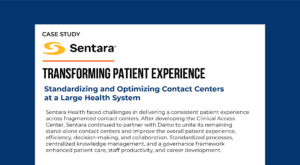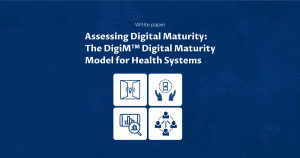Technology integration is a must for seamless digital health experience
Future technology trends in healthcare
Listen to the full conversation
According to Marc, the top two technology trends that will determine the future of healthcare are interoperability and digital health. Interoperability is the key requirement in healthcare, as technologies should meet the needs of the population, they should communicate with each other and should have the ability to share data in a responsible way. On the other hand, digital health is about facilitating what we do today using digital mechanisms like telehealth and moving towards full interaction with technology versus human beings, where technology integration will provide knowledge, capability, and expertise.
“I think interoperability is going to be a key requirement as we move forward. The second thing I would add would be digital health. But none of that really meets the needs of the populations that we serve if our systems cannot talk together and share data in a responsible way.”
– Marc Probst, Episode #59 @TheBigUnlock podcast
COVID-19 accelerated the shift towards digital capabilities
COVID-19 accelerated the adoption of digital health capabilities, especially virtual care, and telehealth models. According to Marc, the healthcare technology landscape needs to integrate with each other to create a seamless patient experience. Technology integration must ensure that texting should be just like texting anyone else or looking up data on Siri about one’s medical record versus having to log in into a separate application to do it. While that might create challenges, but that is what is going to make the digital interaction much better for consumers. On part of the health system CIOs, they need to provide a healthcare experience that is easy to maintain and is secure.
“I think one of the big challenges right now that CIOs will be going through, is to get this kind of quagmire, this cobbled-together solutions to something that is much more seamless, much more easy to maintain, and secure in sharing data across. So, I think that is going to be one of the challenges that we have as we move more rapidly to this digital age. And I believe the challenge we are going to have as technologists is not having these separate applications, but using tools that are native to the heart, the solutions that we already have in our hands.” – Marc Probst, CIO, ELLKAY
Current pace of digital transformation
Digital transformation is technology-enabled; it is not necessarily IT-led. Marc says that, going forward, healthcare industry will see more investments in technology integration, which will help in providing efficiencies and better healthcare solutions to its consumers. Investments need to be more on technical solutions, especially digital health solutions. According to Marc, the digital transformation function in an organization is owned by the CEO. The technology is just a tool that can facilitate the shift; the actual shift is done by the people.
“There’s no possible way that healthcare is going to cut costs to being successful or thriving, it’s where investments get made. Investments in technology will continue to create efficiencies and better solutions for those we serve.” –Marc Probst, CIO, ELLKAY














